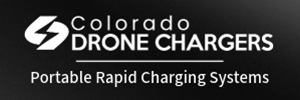- Joined
- May 4, 2023
- Messages
- 2
- Reaction score
- 0
Hi all, I have had 2 situations where my drone just fell from the sky.
Situation 1. I was flying my Skydio 2 drone for ten minutes when suddenly without warning it fell from the sky onto my driveway. It was smashed and not repairable. I reported it to skydio and was told after investigation that the motherboard had a catastrophic failure and the warranty was no good because it was over a year.
I still think Skydio is the best drone pound for pound so I bought a new Skydio2+. I was using the first skydo2 batteries when the drone fell from the sky again. This time I was lucky and it fell from 30ft into bushes and was not destroyed.
I decided to test the batteries by fully charging them and allowing the drone to hover 2 ft of the grown with a rug underneath for security. 2 of the batteries lasted about 10-15 minutes and the drone fell to the grown without warning.
Please test your batteries because there is no returning to home. Just a major crash from the sky.
The question is how to care for the batteries to keep them in good shape. Should they be fully charged and put away or drained and put away.
Situation 1. I was flying my Skydio 2 drone for ten minutes when suddenly without warning it fell from the sky onto my driveway. It was smashed and not repairable. I reported it to skydio and was told after investigation that the motherboard had a catastrophic failure and the warranty was no good because it was over a year.
I still think Skydio is the best drone pound for pound so I bought a new Skydio2+. I was using the first skydo2 batteries when the drone fell from the sky again. This time I was lucky and it fell from 30ft into bushes and was not destroyed.
I decided to test the batteries by fully charging them and allowing the drone to hover 2 ft of the grown with a rug underneath for security. 2 of the batteries lasted about 10-15 minutes and the drone fell to the grown without warning.
Please test your batteries because there is no returning to home. Just a major crash from the sky.
The question is how to care for the batteries to keep them in good shape. Should they be fully charged and put away or drained and put away.



